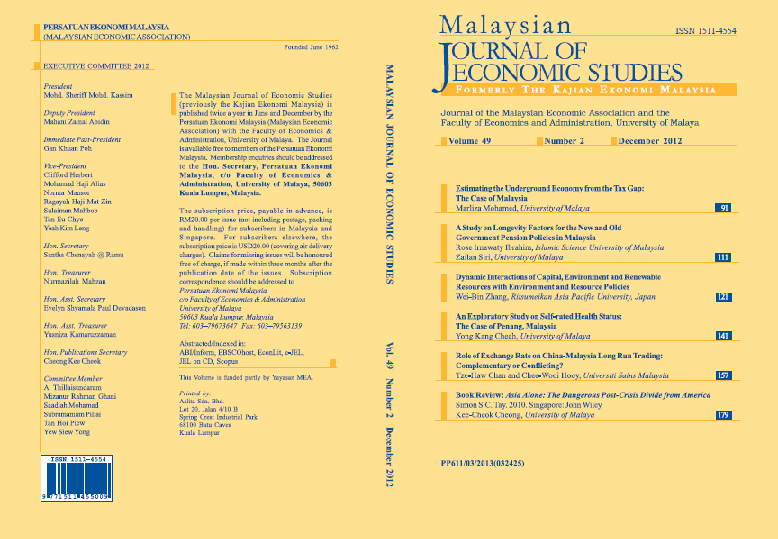Role of Exchange Rate on China-Malaysia Long Run Trading: Complementary or Conflicting?
Keywords:
Exchange rates, J-curve, Marshall-Lerner Condition, ARDL Bound TestAbstract
This paper examines the long run dynamics of exchange rate and bilateral expor-timport flows between China and Malaysia, from January 1990 to January 2008. The study is conducted based on the Autoregressive Distributed Lag bound testing procedure, the fully modified OLS, dynamic OLS and rolling estimations, as well as the generalised impulse response (IRF) and variance decomposition (VDC) analyses. Our findings reveal that the Marshall-Lerner condition holds in the long run but the export-import demands do not adhere to the J-curve pattern. In addition, expansionary effect is of greater evidence for Malaysia due to real exchange shocks but inconclusive for China. More important, the VDC results imply that China-Malaysia trade is along the sustainable path. In brief, the study supports the complementary role of China instead of conflicting (competing) features in the China-Malaysia bilateral trading.

